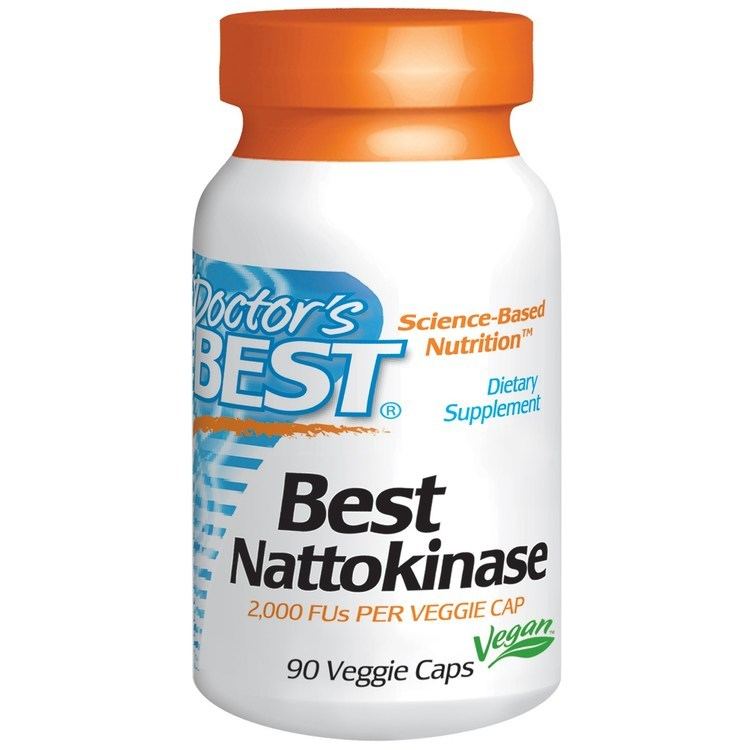Classification Enzyme | ||
 | ||
Nattokinase (pronounced nat-oh-KY-nase) is an enzyme (EC 3.4.21.62) extracted and purified from a Japanese food called nattō. Nattō is made from fermented soybeans and has been eaten in Japan for about a thousand years. Nattō is produced by fermentation by adding the bacterium Bacillus natto to boiled soybeans. Nattokinase is produced by the bacterium acting on the soybeans. While other soy foods contain enzymes, it is only the nattō preparation that contains the specific nattokinase enzyme.
Contents
In spite of its name, nattokinase is not a kinase enzyme, but a serine protease of the subtilisin family. It exhibits a strong fibrinolytic activity. Nattokinase can now be produced by recombinant means and in batch culture, rather than relying on extraction from Nattō.
Nattokinase was first isolated and marketed under the name of NSK-SD in 1998 by Japan Bio Science Laboratory, which had removed vitamin K2.
Nattokinase review
Heart disease
Nattokinase may be potentially useful as a clot-buster and blood thinner, and is considered by some in the alternative medicine community as a possible adjunctive therapy in cardiovascular disease. There is some evidence for its effectiveness. Possible side effects have been reported. In one case, a patient concurrently taking aspirin and 400 mg of nattokinase daily for seven consecutive days to prevent stroke suffered an acute cerebellar hemorrhage.
Alzheimer's Disease
A 2009 study showed that nattokinase may be effective in catabolism of toxic amyloid fibrils associated with Alzheimer's Disease, as well as the insulin fibrils associated with diabetes and the prion peptide fibrils associated with prion diseases. The study reported that its effects were similar to those seen when proteinase K was applied in the same manner. The study's authors noted that "[t]his amyloid-degrading ability of nattokinase suggests that it may be useful in the treatment of amyloid-related diseases," particularly as "[p]revious results in rats, dogs and humans have suggested that nattokinase can enter the circulation when taken orally." However, they cautioned that their results were preliminary, and made the following suggestion:"[S]ince natto has been ingested by humans for a long time, it would be worthwhile to carry out an epidemiological study on the rate of occurrence of various amyloid-related diseases in a population regularly consuming natto." Indeed, 2011 WHO data shows nearly a tenfold increased incidence of death by Alzheimer's and dementia in the United States versus Japan, where natto is regularly consumed by a significant portion of the populace.
Digestion
Digestive enzymes appear to cleave nattokinase into constituent amino acids, from which the components are absorbed into the bloodstream, therefore nattokinase should not have any direct fibrinolytic effects beyond the lumen.
